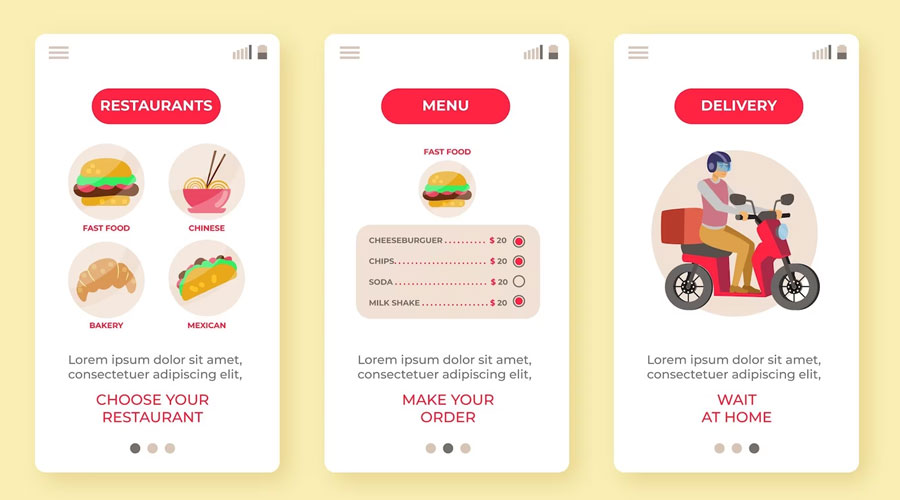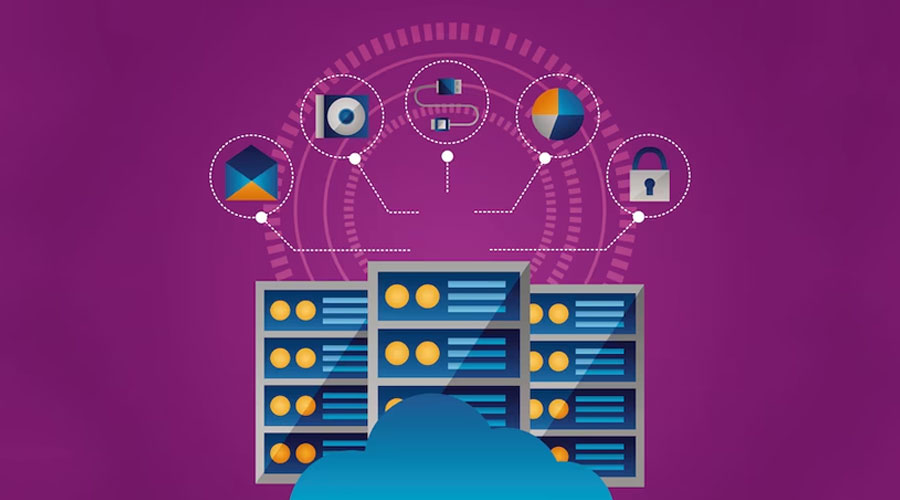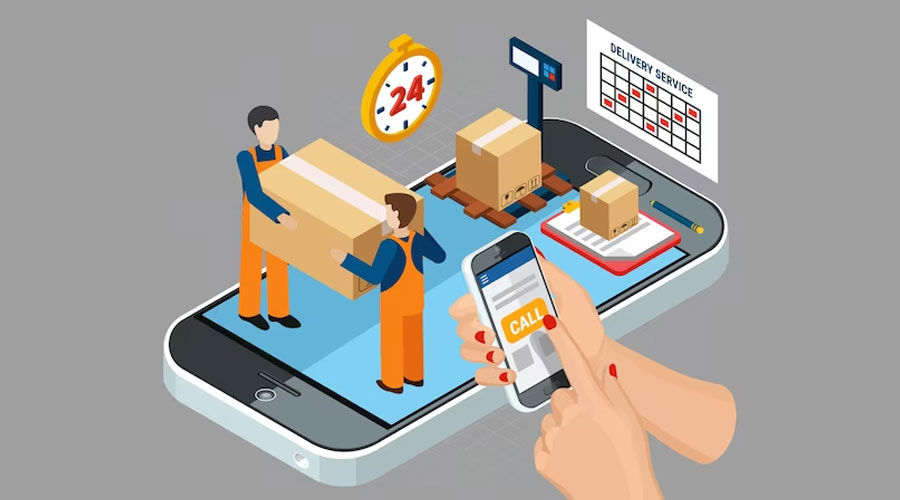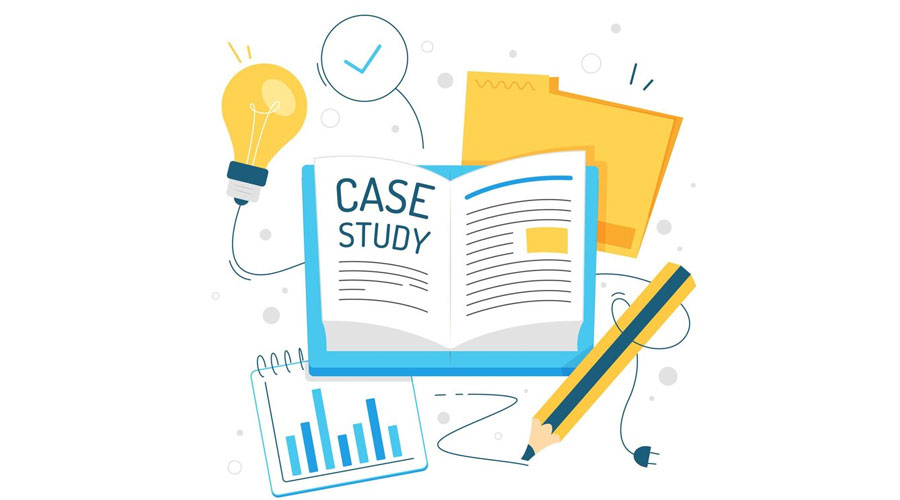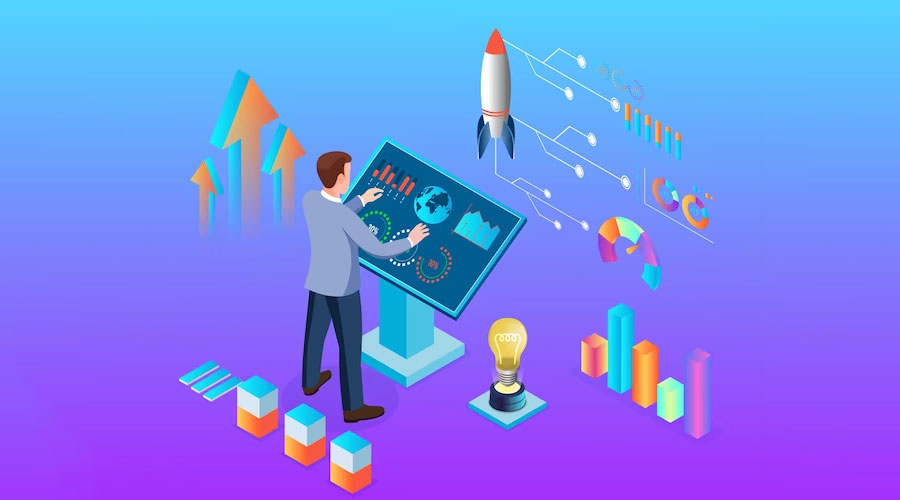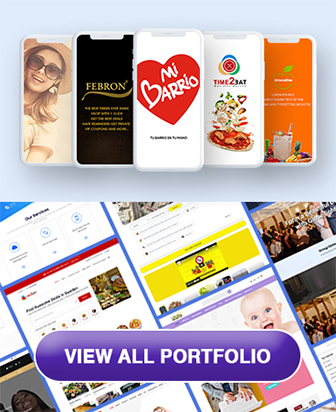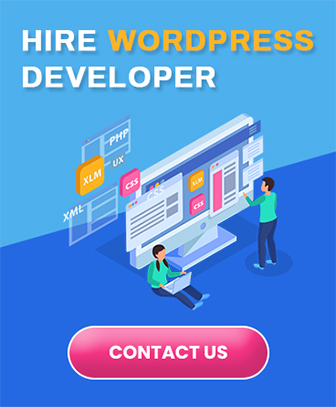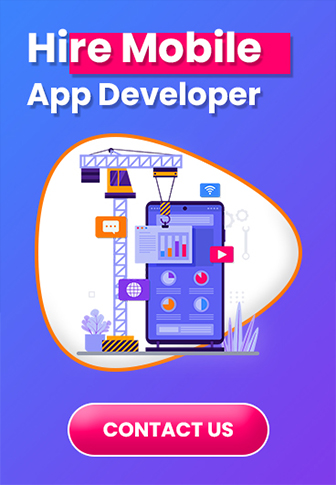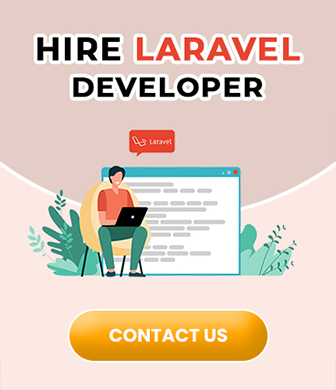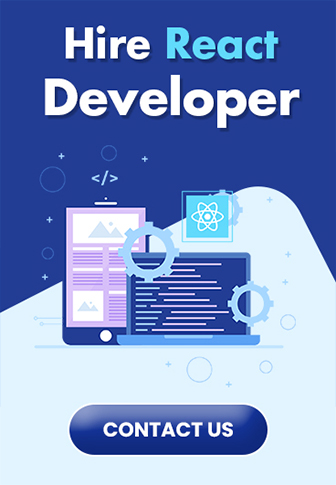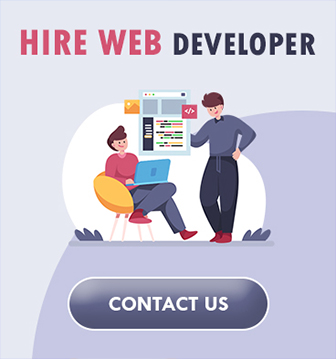Table of Contents
Key Roles of Food Delivery App Developers
Food delivery app developers play pivotal roles in the development and maintenance of food delivery apps. Their responsibilities go beyond just writing code; they are the architects of the user experience and the foundation upon which the success of these apps is built. Here are some key roles and responsibilities that food delivery app developers assume:
- App Architecture and Design: Developers are responsible for designing the overall architecture of the app. They need to create a scalable and maintainable structure that allows for future growth and enhancements. The app’s design should be user-friendly, intuitive, and visually appealing.
- Front-End Development: Front-end development involves creating the user interface that customers interact with. Developers design and build the menus, order placement systems, and interactive elements that make the app user-friendly.
- Back-End Development: Back-end development is the backbone of the app. Developers are tasked with building the server, databases, and APIs that handle order processing, payment transactions, and user account management. The back end also manages data security and user authentication.
- Payment Gateway Integration: Food delivery apps require seamless payment processing. Developers must integrate various payment gateways and ensure secure payment handling. This includes credit card processing, digital wallets, and cash on delivery options.
- Real-Time Tracking: Real-time order tracking is a must-have feature in food delivery apps. Developers incorporate GPS and mapping services to enable customers to track the status and location of their orders in real time.
- Push Notifications: Developers implement push notification systems that keep users informed about order updates, special promotions, and delivery status. These notifications are crucial for user engagement.
- Integration with Third-Party Services: Many food delivery apps collaborate with third-party services for delivery. Developers integrate these services and ensure smooth communication between the restaurant, the delivery service, and the customer.
- Review and Rating System: Developers build review and rating systems to gather feedback from customers. These features help maintain quality and trust within the app.
- Data Security: Protecting users’ personal and payment information is paramount. Developers must implement robust security measures to safeguard sensitive data, including encryption, secure sockets layer (SSL) certificates, and compliance with data protection regulations.
- Scalability: As the app’s user base and the number of partner restaurants grow, developers must ensure that the app can handle increased traffic and orders. Scalability is crucial to maintaining a seamless user experience.
- Testing and Quality Assurance: Developers perform rigorous testing to identify and eliminate bugs, glitches, and performance issues. Quality assurance ensures a smooth and error-free app.
- Compliance and Regulation: Food delivery apps must adhere to local and national regulations regarding food safety and delivery standards. Developers need to stay informed about these regulations and ensure the app remains compliant.
- User Support and Feedback: Developers often incorporate features that allow users to contact customer support, report issues, or seek assistance. They are responsible for providing solutions to users’ problems and maintaining a responsive support system.
- Continuous Improvement: Food delivery app developers are not done once the app is launched. They continuously work on updates and improvements, taking into account user feedback and technological advancements to enhance the app’s performance and features.
- Data Analytics: Developers may also be responsible for implementing data analytics tools. These tools provide valuable insights into user behavior and ordering trends, helping restaurants and delivery services make data-driven decisions.
Technology Stack and Frameworks
When it comes to food delivery app development, choosing the right technology stack and frameworks is crucial. The choice of technology can significantly impact the performance, scalability, and overall success of the app. Here are some essential components of a typical food delivery app technology stack and the frameworks commonly used:
- Operating System: Food delivery apps are typically developed for both Android and iOS platforms, which require the use of different operating systems. For Android, developers use Java or Kotlin, and for iOS, they use Swift or Objective-C.
- Front-End Development:
- Native App Development: For the best user experience and performance, native development is preferred. This means using platform-specific languages and tools, such as Android Studio for Android and Xcode for iOS.
- Cross-Platform Development: Cross-platform development frameworks like React Native, Flutter, and Xamarin have gained popularity. They allow developers to write code once and deploy it on multiple platforms.
- Back-End Development:
- Server: The server-side technology stack plays a vital role in managing data, user accounts, and the overall functioning of the app. Common choices include:
- Node.js: Known for its speed and scalability, Node.js is often used for real-time features like order tracking.
- Ruby on Rails: Ruby on Rails is known for rapid development and has been popular among startups in the food delivery industry.
- Python: Python frameworks like Django or Flask are known for their simplicity and ease of use.
- Java: Java is a popular choice for large-scale applications and is known for its security.
- Database: Choosing the right database is essential for storing user data, order history, restaurant information, and more. Common databases used include:
- MySQL: A popular open-source relational database.
- MongoDB: A NoSQL database known for its flexibility in handling unstructured data.
- PostgreSQL: A powerful, open-source relational database with a strong reputation for data integrity.
- APIs: Integration with third-party services, including payment gateways, mapping and location services, and SMS notification systems, is vital. For instance, Stripe and PayPal are commonly used for payment processing.
- Server: The server-side technology stack plays a vital role in managing data, user accounts, and the overall functioning of the app. Common choices include:
- Real-Time Features:
- For real-time order tracking and messaging, technologies like WebSockets or third-party services like Firebase Cloud Messaging (FCM) or Apple Push Notification Service (APNS) are often used.
- Cloud Services:
- Utilizing cloud services like AWS, Google Cloud, or Microsoft Azure can help with scalability, storage, and data management.
- Geolocation Services:
- Leveraging geolocation services, such as Google Maps API or Mapbox, is essential for features like locating nearby restaurants and tracking deliveries.
- Frameworks and Libraries:
- Express.js: A popular framework for building APIs and server-side applications in Node.js.
- Django: A high-level Python web framework that simplifies development.
- Ruby on Rails: A Ruby framework known for its developer-friendly environment.
- Development Tools:
- Version control tools like Git and project management tools like Jira or Trello are essential for tracking progress and managing development teams effectively.
- Security:
- Implementing strong security measures is paramount to protect user data and ensure payment security. This includes encryption protocols and secure coding practices.
- Analytics and Monitoring:
- Tools like Google Analytics and Mixpanel can help track user behavior and app performance. Additionally, crash reporting tools like Crashlytics are crucial for identifying and addressing issues.
- Testing and QA Tools:
- Automation testing tools like Appium and Selenium are used to ensure the app’s functionality across different devices and platforms. Manual testing is also important for user experience evaluation.
- DevOps Tools:
- Continuous integration and continuous deployment (CI/CD) tools, such as Jenkins and Travis CI, are used to streamline development and deployment processes.
Order Management System
In the rapidly evolving landscape of food delivery apps, staying competitive requires continuous innovation. One essential component that has become indispensable for the success of these platforms is an advanced Order Management System (OMS). In this article, we’ll delve into the significance of an OMS for food delivery apps, its role in optimizing operations, and the benefits it offers to both customers and businesses.
The Role of Order Management Systems
Order Management Systems are the backbone of food delivery apps, orchestrating the entire process from order placement to delivery. Their core functions include order capture, routing, tracking, and ensuring accurate delivery. Here’s a closer look at the key roles an OMS plays:
- Order Aggregation: An OMS collects and centralizes orders from various sources, such as websites, mobile apps, and even phone calls. This aggregation streamlines the process and prevents errors that can occur when managing orders from different channels separately.
- Order Routing: OMSs use intelligent algorithms to route orders to the most appropriate restaurant or kitchen based on factors like location, cuisine, and capacity. This ensures efficient order distribution, reducing delivery times and optimizing resources.
- Real-Time Tracking: They provide real-time order tracking, allowing customers to monitor the progress of their order from preparation to delivery. This transparency enhances the overall customer experience and builds trust.
- Data Analytics: OMSs collect valuable data on order patterns, delivery times, customer preferences, and more. This data can be used to optimize menus, improve operational efficiency, and enhance marketing strategies.
- Inventory Management: For restaurant owners, OMSs help manage inventory by tracking ingredient usage and notifying when supplies are running low. This ensures that they can meet customer demands without running out of stock.
- Delivery Optimization: They optimize the dispatch of delivery drivers, considering factors like traffic, order priority, and driver availability. This ensures that deliveries are made on time.
Benefits of an Advanced Order Management System
Implementing an advanced OMS in food delivery apps offers a range of benefits, making it a must-have tool for businesses in the industry:
- Enhanced Efficiency: OMSs automate many aspects of order processing, reducing manual errors and increasing overall efficiency. This leads to faster order processing and delivery.
- Improved Customer Experience: Real-time tracking, accurate ETAs, and efficient routing all contribute to an improved customer experience. Happy customers are more likely to return and recommend the app to others.
- Inventory Optimization: For restaurant owners, OMSs help prevent overstocking or understocking by providing insights into ingredient usage. This minimizes wastage and reduces costs.
- Customization and Scalability: An advanced OMS is flexible and can be customized to meet the specific needs of different food delivery apps. It can scale with the growth of the business and adapt to changing market demands.
- Data-Driven Decision Making: The data collected by OMSs is invaluable for making informed decisions. It helps in menu optimization, pricing strategies, and marketing efforts.
- Reduced Operational Costs: By optimizing delivery routes and managing resources efficiently, OMSs can reduce operational costs, contributing to higher profit margins.
- Competitive Advantage: In the highly competitive food delivery industry, having an advanced OMS can set an app apart from the rest. It attracts both customers and restaurant partners looking for a seamless and efficient experience.
Future Trends in Order Management Systems
As technology continues to advance, Order Management Systems for food delivery apps are expected to evolve as well. Here are some future trends to watch out for:
- AI and Machine Learning: OMSs will increasingly use AI and machine learning to make more accurate predictions, such as demand forecasting and dynamic pricing.
- Blockchain for Transparency: Blockchain technology may be used to enhance transparency and traceability in the food delivery supply chain.
- Voice and Chat Integration: Integration with voice assistants and chatbots may become more common, allowing users to place orders and track deliveries using natural language.
- Sustainability Features: OMSs may include sustainability features, such as optimizing delivery routes to reduce carbon emissions and encouraging eco-friendly packaging.
- Drones and Autonomous Delivery Integration: As drone and autonomous delivery services become more widespread, OMSs will need to integrate with these technologies to further optimize delivery.
Customer and Restaurant Portals
In the previous section, we explored the world of food delivery apps and the role of app developers in creating these innovative platforms. But what’s equally important, if not more so, are the customer and restaurant portals that serve as the heart and soul of these apps. In this article, we’ll delve into the crucial aspects of customer and restaurant portals, their functionalities, and their impact on the food delivery industry.
Customer Portals: Where Convenience Meets Cravings
Customer portals are the windows through which users access the vast world of food delivery apps. These portals are designed to provide a user-friendly, personalized, and efficient experience to satisfy the cravings of customers. Let’s take a closer look at the key features and functionalities of customer portals:
- User Registration and Profiles: The journey begins with user registration. Customers create profiles, where they can save their delivery addresses, payment methods, and favorite orders. This feature streamlines the ordering process for returning customers.
- Menu Browsing: Customer portals offer an extensive list of restaurants and their menus. Users can explore a wide variety of cuisines, dishes, and even filter by dietary preferences or special offers.
- Order Customization: Customers can personalize their orders, specifying preferences such as spice levels, ingredients to exclude, or portion sizes.
- Real-Time Order Tracking: One of the most loved features is real-time order tracking. Customers can monitor the status of their orders, from preparation in the restaurant to the delivery at their doorstep.
- Payment and Checkout: The portal integrates various payment options, including credit cards, digital wallets, and even cash on delivery. The seamless checkout process ensures quick and secure payments.
- Ratings and Reviews: Customers can leave ratings and reviews for both restaurants and delivery drivers. This feedback system helps maintain quality and transparency.
- Promotions and Loyalty Programs: Many apps offer promotional codes and loyalty programs to encourage repeat orders and reward loyal customers.
- Customer Support: In case of any issues or inquiries, customer portals typically provide access to customer support through chat, email, or phone.
Restaurant Portals: The Backstage Heroes
While customer portals are visible to all, restaurant portals play an essential behind-the-scenes role. These platforms are designed to enable restaurants to manage their online presence and efficiently fulfill orders. Here are the key components of restaurant portals:
- Restaurant Registration: Restaurants need to create profiles that include their menu, pricing, working hours, and delivery radius.
- Order Management: The portal allows restaurants to receive, accept, prepare, and dispatch orders. Integration with their kitchen management systems ensures timely order execution.
- Menu and Pricing Management: Restaurants can update their menus, add new dishes, and adjust prices as needed.
- Delivery Management: Some restaurants manage their deliveries in-house, while others partner with delivery services. The portal helps coordinate this process, providing delivery instructions to drivers.
- Real-Time Analytics: Access to data on order volumes, customer ratings, and sales helps restaurants make informed decisions to optimize their services.
- Communication: The portal often includes a chat or messaging system to communicate with customers and resolve any order-related issues.
- Payment and Settlement: Restaurants receive payments for orders through the portal, with a clear breakdown of their earnings and fees.
- Promotions and Marketing: The portal might offer promotional tools, enabling restaurants to run special offers or discounts to attract more customers.
Challenges and Opportunities
Operating customer and restaurant portals in food delivery apps is not without its challenges. Both portals must be highly responsive, secure, and capable of handling peak loads during busy hours. Additionally, maintaining the trust of users and restaurant partners is vital. Apps must ensure data privacy, order accuracy, and reliable delivery services.
However, these challenges also present opportunities for growth and innovation:
- Integration of AI: AI can be used to enhance the customer experience by offering personalized recommendations and optimizing delivery routes for efficiency.
- Expanded Restaurant Services: Restaurant portals can offer add-on services like in-app reservations, takeout orders, or catering options.
- Streamlined Management: Providing restaurants with more robust tools for managing their online presence, tracking performance, and accessing customer insights can strengthen partnerships.
- Sustainability Initiatives: Both customer and restaurant portals can encourage the use of eco-friendly practices, such as reducing plastic packaging or carbon-neutral delivery options.
- Market Expansion: Expanding the geographical reach of the app, partnering with more international restaurants, and catering to diverse cuisines are avenues for growth.
- User Engagement: Innovations in gamification and community-building can improve user engagement, making the app not just a utility but a social platform.
Cost Factors and Pricing Models
In the world of food delivery app development, understanding the various factors that contribute to the cost and choosing the right pricing model is crucial for both app developers and businesses looking to create or invest in a food delivery app. This article will delve into the addon cost factors and pricing models that play a significant role in the development of these apps.
Addon Cost Factors in Food Delivery App Development
- Platform (iOS, Android, Web): The choice of platform greatly impacts the cost. Developing apps for multiple platforms (iOS, Android, and web) will naturally be more expensive. Cross-platform development tools can help reduce costs.
- App Features: The complexity of the app’s features significantly influences costs. Basic apps with essential features cost less, while apps with advanced features like real-time tracking, in-app chat support, and augmented reality (AR) menus will be more expensive.
- Design and User Experience: High-quality user interface (UI) and user experience (UX) design enhance the app’s appeal but can increase development costs. A well-designed app often attracts more users.
- Integration: Integrating various third-party services such as payment gateways, mapping services, and delivery tracking APIs can add to the cost, as they require customization and ongoing maintenance.
- Geographical Location: Development costs can vary depending on the location of the development team. Rates are higher in regions with a higher cost of living.
- Data Security and Compliance: Ensuring data security and regulatory compliance is essential but can involve additional expenses, especially if the app deals with sensitive information.
- Testing and Quality Assurance: Rigorous testing and quality assurance are essential for delivering a bug-free app. This phase incurs costs in terms of time and resources.
- Maintenance and Updates: Ongoing maintenance, updates, and customer support contribute to the total cost of app ownership.
Pricing Models for Food Delivery App Development
When it comes to pricing models for food delivery app development, there are several options to consider:
- Fixed Price: Under a fixed price model, the development team provides a set price for the entire project, taking into account all features and requirements. This is a good option for well-defined projects with clear, unchanging requirements.
- Time and Materials (T&M): In the T&M model, you pay for the actual time spent on development and the materials used. This model is flexible and suits projects with evolving requirements.
- Dedicated Team: For businesses with ongoing development needs, hiring a dedicated development team can be a cost-effective solution. You pay a monthly fee for the services of a dedicated team of developers, designers, and testers.
- Milestone-Based: In this model, payments are made upon the successful completion of predetermined project milestones. It provides a structured approach to development and payment.
- Revenue Sharing: Some development companies may offer a revenue-sharing model where the development team takes a percentage of the app’s revenue in exchange for their services. This is less common but can be suitable for startups with limited upfront capital.
- Hybrid Model: A hybrid model combines elements of fixed pricing, T&M, and revenue sharing, providing flexibility and cost control while sharing the risks and rewards.
Choosing the Right Pricing Model
Selecting the right pricing model depends on the specific needs and circumstances of the project. Here are some considerations to help you make the right choice:
- Project Complexity: For well-defined projects, a fixed price model can be suitable. For evolving projects, T&M may be more appropriate.
- Budget and Funding: Consider your budget and available funding. Revenue-sharing may be an option if you lack upfront capital.
- Long-Term vs. Short-Term: Think about the project’s duration. A dedicated team may be the best choice for ongoing, long-term development needs.
- Risk Sharing: Evaluate your willingness to share the project’s risks and rewards. Revenue sharing and hybrid models share risks with the development team.
- Communication and Collaboration: Consider the level of communication and collaboration you desire with the development team. This can vary by pricing model.
- Flexibility: Think about how flexible the project requirements are. A milestone-based approach can provide flexibility within a structured framework.
Case Studies and Success Stories
To better illustrate the impact of food delivery app developers and the evolution of the industry, let’s delve into some real-world case studies and success stories.
1. UberEats: Revolutionizing the Ride-Hailing Giant
Uber, originally known for its ride-hailing service, ventured into the food delivery market with UberEats in 2014. This move was facilitated by a dedicated team of food delivery app developers. They successfully integrated UberEats into the existing Uber app, creating a seamless user experience. The app’s success led to rapid expansion worldwide, making it one of the largest players in the food delivery market. UberEats’ success demonstrates the significance of talented developers in transforming a business and diversifying revenue streams.
2. DoorDash: Adapting to Pandemic Challenges
DoorDash, a U.S.-based food delivery app, experienced substantial growth during the COVID-19 pandemic. This growth was attributed to its ability to quickly adapt and serve the changing needs of customers. Their team of developers worked tirelessly to implement contactless delivery options and safety measures, enhancing the app’s appeal during a challenging time. DoorDash’s agility in responding to customer demands exemplifies the critical role of developers in meeting market requirements.
3. Swiggy: Catering to the Indian Market
Swiggy, an Indian food delivery app, has not only connected users with their favorite local restaurants but also supported the growth of the food delivery industry in India. The app developers at Swiggy have tailored the platform to meet the unique challenges and demands of the Indian market. They’ve incorporated multilingual support, diverse payment options, and optimized the app for slower internet connections. Swiggy’s success story showcases the importance of understanding local nuances and catering to specific demographics.
4. Deliveroo: Transforming the Dining Experience
Deliveroo, a UK-based food delivery app, has gone beyond just delivering restaurant meals. They’ve collaborated with restaurants to create delivery-only kitchen spaces, known as Editions, which cater exclusively to delivery orders. This innovative approach has been possible thanks to a team of developers who built the technology to manage these virtual kitchens efficiently. Deliveroo’s model illustrates how app developers can drive innovation in the industry and reshape the dining experience.
5. Zomato: A Global Player with Local Flavor
Zomato, an Indian food delivery and restaurant discovery platform, expanded globally with a keen focus on local experiences. Their developers played a significant role in tailoring the app for different markets. Zomato’s app offers features such as user reviews, photos of dishes, and menu recommendations, which were all made possible by skilled developers. Their success underlines the importance of building an app that resonates with the local culture and preferences.
6. Postmates: A Pioneer in On-Demand Delivery
Before its acquisition by UberEats, Postmates was a pioneering player in on-demand food delivery. Their developers designed a platform that not only connected users with restaurants but also facilitated the delivery of various products, including groceries and convenience items. Postmates’ versatility showcased the potential for diversification within the food delivery app industry, thanks to the innovation of their development team.
These case studies and success stories demonstrate how food delivery app developers have been instrumental in the growth and transformation of the industry. Their skills and innovation have allowed food delivery apps to not only meet customer demands but also to lead the way in creating new trends and customer experiences. The future of food delivery apps is indeed promising, with developers continuing to play a vital role in shaping it.
Market Trends and Innovations
As the food delivery app industry continues to evolve, several market trends and innovations are shaping the way we order and enjoy our meals. These developments not only enhance user experiences but also open up new possibilities for food delivery app developers. Let’s explore some of the key trends and innovations that are driving this industry forward:
- Contactless Delivery: The COVID-19 pandemic accelerated the adoption of contactless delivery. Food delivery apps introduced features that allow users to request contactless drop-offs, where the delivery person leaves the order at the doorstep, reducing physical contact and increasing safety.
- Subscription Services: Subscription-based models have gained popularity in the food delivery sector. Apps like DoorDash and Postmates offer subscription services that provide users with free delivery and other perks for a monthly fee. This trend promotes user loyalty and increased order frequency.
- Ghost Kitchens: Ghost kitchens, also known as virtual kitchens, are commercial cooking facilities designed solely for food delivery. These kitchens allow restaurants to expand their reach without the need for a physical dining area. Developers are creating platforms that help manage these virtual kitchens efficiently.
- Cloud Kitchens: Cloud kitchens take the concept of ghost kitchens a step further. These shared kitchen spaces are equipped with multiple cooking stations, allowing several restaurant brands to operate from a single location. Food delivery apps are partnering with cloud kitchen operators to offer users a wide range of cuisine options.
- Integration with Third-Party Services: Food delivery apps are increasingly integrating with third-party services. For example, some apps partner with grocery stores to offer both restaurant food delivery and grocery delivery in a single app. This diversification provides users with a one-stop-shop for various culinary needs.
- Machine Learning and AI: Machine learning and artificial intelligence are being harnessed to enhance the user experience. These technologies are used to predict user preferences, optimize delivery routes, and even suggest menu items based on individual tastes and dietary restrictions.
- Geofencing and Location-Based Marketing: Apps are utilizing geofencing technology to send users targeted promotions and discounts when they are near a restaurant or in a specific area. This enhances user engagement and drives sales.
- Voice-Activated Ordering: The integration of food delivery apps with voice-activated devices like Amazon’s Alexa and Google Home is on the rise. Users can place orders and track deliveries using voice commands, making the process even more convenient.
- Sustainable Initiatives: Sustainability is a growing concern for consumers. Food delivery apps are responding by promoting eco-friendly practices, such as reducing single-use plastics, offering plant-based options, and partnering with restaurants that prioritize sustainable sourcing and packaging.
- Hyperlocal Delivery: Hyperlocal delivery is gaining ground, with apps focusing on delivering food from neighborhood restaurants within a limited radius. This trend is especially popular in urban areas and promotes local businesses.
- Social Media Integration: Developers are integrating social media features into food delivery apps, allowing users to share their food experiences, reviews, and recommendations with their friends and followers. This boosts the app’s marketing potential and helps users discover new restaurants.
- Enhanced Data Analytics: Food delivery apps are investing in advanced data analytics to better understand user behavior and trends. By analyzing this data, developers can make data-driven decisions to improve the app’s functionality and customer experience.
- Virtual Reality (VR) and Augmented Reality (AR): Although in their early stages, VR and AR are being explored for enhancing the ordering experience. For instance, users could visualize menu items in 3D before placing an order or interact with virtual waitstaff for recommendations.








